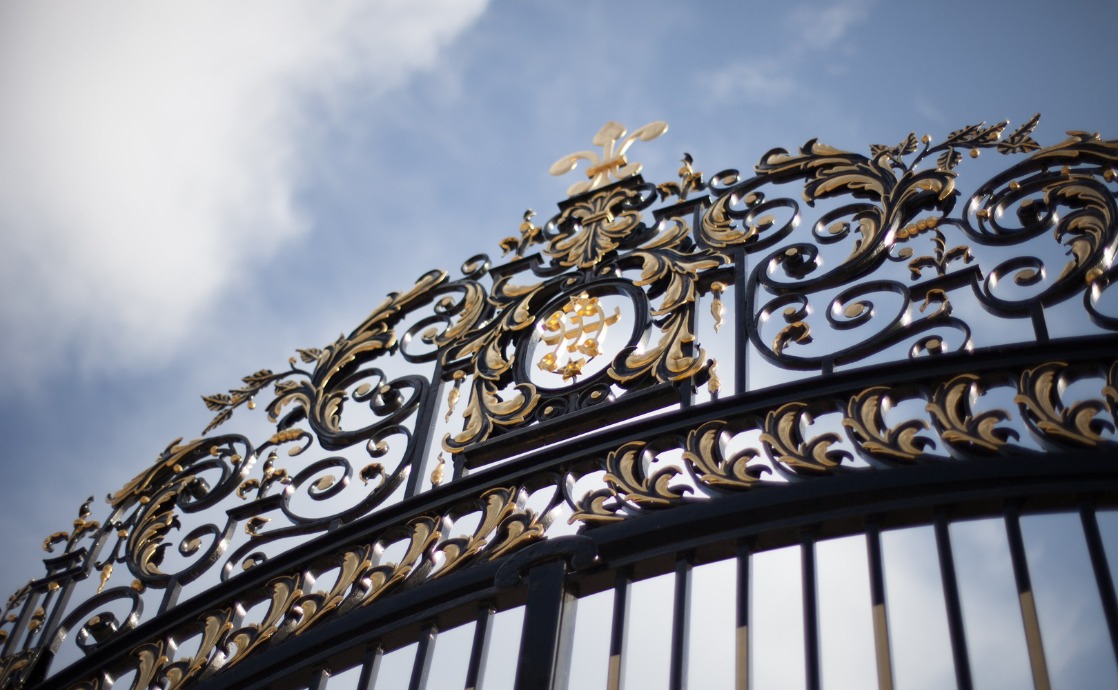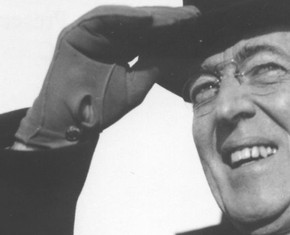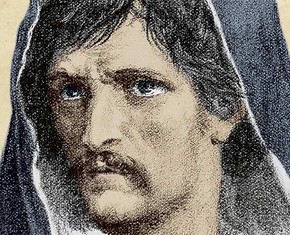The views expressed in our content reflect individual perspectives and do not represent the authoritative views of the Baha'i Faith.
Baha’is have intense emotional feelings about the Shrine of Baha’u’llah, the place they regard as the holiest place on the planet.
Those feelings heighten when they learn more about what happened at the time of Baha’u’llah’s passing, known as his “Ascension,” at the age of 74 in May of 1892. Baha’is regard Baha’u’llah, the prophet and founder of their Faith, as the most recent Divine messenger, and revere his teachings.
In my new book, Point of Adoration, I describe the solemn lamp-lit funeral procession, the arrival of the casket in the inner Shrine, and the interment of Baha’u’llah’s sacred remains by Abdu’l-Baha.
The more we study the last years of Baha’u’llah’s life, the more the description of him by Shoghi Effendi, the Guardian of the Baha’i Faith, becomes truly evident: “… the august figure of Baha’u’llah, preeminent in holiness, awesome in the majesty of His strength and power, unapproachable in the transcendent brightness of His glory.” Shoghi Effendi’s statement – that an exact and thorough comprehension of Baha’u’llah’s “stupendous Revelation” is “beyond the reach and ken of our finite minds” – grows more clear as the intensity of our study increases.
RELATED: When a Prophet Passes Away: The Ascension of Baha’u’llah
As Baha’i visitors experience Bahji, the collective name given to the area that includes Baha’u’llah’s Shrine as well as the mansion that was his last home, they learn that it is characterized by a pervasive reverent silence, or a softly voiced appreciation. But by considering Baha’u’llah’s injunction to “remember My days during thy days,” we can expand our view of the place by calling to mind the busy compound of families and pilgrims in the final twelve and a quarter years of Baha’u’llah’s life there.
At that time, in the latter part of the 19th century, riders on horses and donkeys traveled to and from the nearby city of Akka – some with carts bringing supplies from the markets – and flocks of poultry and sheep grazed near the compound. Children’s classes took place on the ground floor of the mansion. There was a blacksmith hard at work, and men occupied themselves with their trades, farming, crafts, and art. In and near the houses lining the compound, women were busy with cooking, laundry, sewing, and weaving.
Baha’u’llah’s chamber where he received visitors and pilgrims was in the south-east corner of the upper floor of the mansion, away from the hustle and bustle of the compound. Abdu’l-Baha, who prepared Baha’i pilgrims before they left Akka for Bahji, ensured that they were neat and tidy, often giving them new clothes after their exhausting journeys from faraway places like Persia and Iraq.
An increased knowledge of the historical prelude to the establishment of Baha’u’llah’s Shrine can deepen our amazement at his accomplishments.
Rather than perhaps expecting Baha’u’llah to slow down after turning 60, instead the founder of the Baha’i Faith emerges as an incredibly active figure, who carefully laid down the foundations for the continuing evolution of the Faith after his passing.
Writing in 1873 in his Most Holy Book, Baha’u’llah specifically ordained his last resting place as the “Qiblih” – an Arabic word meaning “direction” – as the point to which Baha’is should turn when offering their obligatory prayers. Abdu’l-Baha later named Baha’u’llah’s Shrine a place of pilgrimage.
Before Baha’u’llah passed away, he revealed his last will and testament, the Book of the Covenant, which named Abdu’l-Baha as his successor, referring to him as the “Most Mighty Branch.”
Abdu’l-Baha, known to all Baha’is as “the Master,” would be the center of a Covenant that, as Shoghi Effendi later wrote, would “perpetuate the influence of [the] Faith, ensure its integrity, safeguard it from schism, and stimulate its world-wide expansion …”
If we look carefully at the years in between the revelation of those two mighty books, we see that Baha’u’llah was methodical in his preparation for the future. For example, he took steps to ensure the proclamation of the Baha’i Faith around the world, true to its central teaching of the unity of all humanity.
Baha’u’llah had already proclaimed his teachings to royalty and political and religious leaders around the world, but in 1890 he drew into his presence Edward Granville Browne, a brilliant young British academic from one of the greatest educational institutions on Earth, Cambridge University.
Dr. Browne had the astounding ability to remember long conversations word-for-word without taking notes. Fluent in Persian, Arabic, and Turkish, he had spent a year in Persia, discussing spiritual topics with some renowned Baha’i scholars and teachers. Because of his background and unique abilities, Browne was the perfect person to listen to Baha’u’llah explain his teachings – and then relay them to a much wider audience.
When Dr. Browne went home to England, he provided through his lectures, writings, and translations a springboard for proclamations of the Baha’i teachings in the two great world powers of the day, Great Britain with its empire, and the up-and-coming United States of America.
During his last years, Baha’u’llah gave directions and encouragement to the Baha’is who streamed into Bahji. Baha’u’llah’s new Faith had been born in Persia, and then expanded into the regions of the Ottoman Empire that are now Iraq and Turkey. By the time of Baha’u’llah’s ascension in 1892, places opened to the Faith also included Georgia, Egypt, Sudan, Pakistan, Burma (now Myanmar), China, and the Dutch East Indies (now Indonesia)
To help ensure the spread of those divine teachings, Baha’u’llah appointed four dynamic teachers of the Faith to the rank of “Hands of the Cause of God.” They were not clergymen – the Baha’i Faith has no clergy – so those four men held meetings that evolved into the first democratically-elected Baha’i administrative body, the Local Spiritual Assembly of the Baha’is of Tehran. They used the unifying, consensus decision-making system called “consultation” taught by Baha’u’llah.
So keen was Baha’u’llah for the Baha’is to practice consultation, he often declined to answer questions they put to him – but instead encouraged them to practice consultation to find the answers themselves.
In the last two decades of his life, Baha’u’llah revealed so many letters and tablets that Shoghi Effendi described them as “numberless.” Baha’is regard the many clear and sensible principles they contain as a blueprint to solve today’s global and personal problems.
RELATED: How the Hebrew Prophets Predicted the Coming of Baha’u’llah
Among the scriptures Baha’u’llah revealed during that period: the Tablet of Carmel, the charter of the world spiritual and administrative center of his Faith on Mount Carmel in Haifa, evidenced today by the exquisite Shrine of the Bab with its garden terraces, and the marble-clad administrative buildings nearby, and the 19 terraces ascending the mountain.
There are many discoveries to make as we study the story of Baha’u’llah’s Shrine, a place with a mysterious emanation of peace. Our journey to understand more and more about Baha’u’llah is somewhat like the evolving, yet never-ending search to understand God. That eternal adventure is full of peaks climbed and more to come, of ever-bestowing delights and wonders.
Michael V. Day is the author of the 2023 book Point of Adoration – The story of the Shrine of Baha’u’llah 1873-1892. This essay is inspired by that book. He has also written a trilogy about the Shrine of the Bab, and was the editor of the Baha’i World News Service from 2003-2006. www.michaelvday.com
















Comments
Sign in or create an account
Continue with Googleor